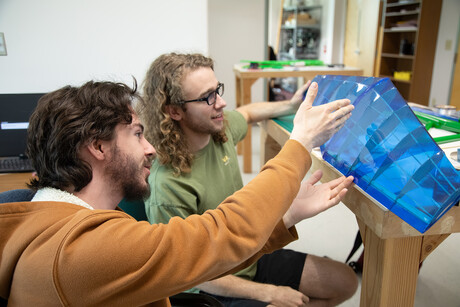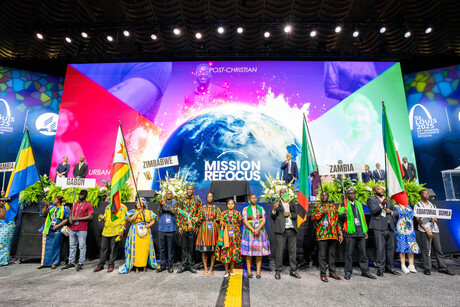In the 19th and early 20th century, steam locomotives chugged along miles of track in the United States. The boilerman, or fireman, would feed coal to the fire which heated the water needed to create steam that powered the locomotive. By controlling the amount of steam released, the crew could establish, control and maintain an economical use of the forward momentum.
The locomotive could be prevented from moving forward by strategically placing small wooden blocks under its wheels. However, when the crew let the locomotive start moving forward and built up a full head of steam, the train had the power to blast through a brick wall.
The difference between the at-rest and full-powered locomotive? Momentum!
Too often, the church is like a powerful locomotive at rest. It has potential, but nothing is done with the potential. A few strategically placed obstacles by the enemy of Christ have the ability to hinder all forward progress. When those obstacles are removed, though, the gates of hell cannot stop the church from rescuing souls lost in sin.
I believe that one of those obstacles is a lack of focus on the mission of the Seventh-day Adventist Church. Any organization will languish and die without clarity about its mission.
The mission of the Seventh-day Adventist Church is to communicate to all people the everlasting gospel of Revelation 14:6–12, leading them to accept Jesus Christ as their personal Savior and Lord, preparing them for His soon return and uniting with His remnant church.
I am excited about Washington Conference's involvement with Momentum, the cyclical evangelistic program that is focused on building relationships and gearing up church members to be actively involved in sharing their faith. This is helping us in western Washington to clarify and focus on our mission.
In the last two years, I've talked many times with churches and pastors about "winning back our baptistries." Too many of our good churches have the mistaken idea that we can just bring in an evangelist once every two years and then baptize 20 to 30 people. The baptistry then sits empty and collects dust and cobwebs during the intervening time.
Business coach and author, Jim Collins, when speaking of organizations, says that "good is the enemy of great." I believe the way for our conference—and other conferences in our union—to rise above a mediocre average growth rate of 2 percent over 10 years is for every church to adopt the challenge of "using the baptistery once a month." This type of goal will help each local church to clarify and focus on its mission. Each baptism fuels the reminder that there is no power in heaven or earth that can defeat the love of Christ in the heart of one who surrenders and believes.
Since January 2007, when Washington Conference officially launched the first cycle of Momentum, we've seen churches remove their evangelism obstacles and find new vigor, new power, and new potential. No longer is the focus on internal problems; rather, time and energy are devoted to sharing faith with family, friends, and neighbors. We're chugging ahead into the future, powered by the Holy Spirit, and eager to see the destination God has in store for us.
May the Lord continue to bless us as we collaborate to fulfill our mission and continuously fill our baptistries for Him.










